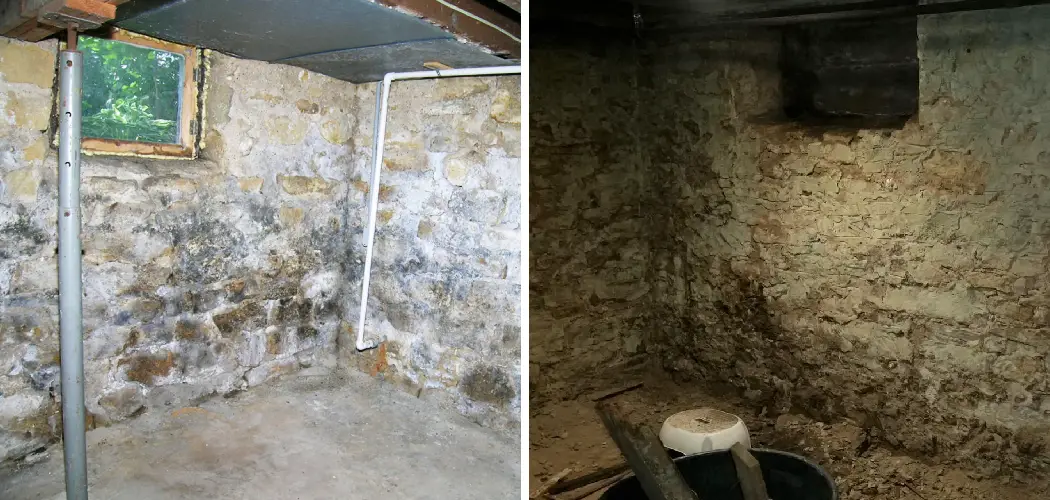Are you facing the daunting task of fixing a limestone basement wall in your home? Repairing this type of stone foundation can seem like an insurmountable job, but with the right tools and knowledge it can be done relatively easily.
Whether you’re dealing with cracks or water seepage, here’s everything you need to know about how to repair a limestone basement wall – from leak detection to patching up any gaps. We’ll cover all the basics, so keep reading for tips on how to fix limestone basement walls!
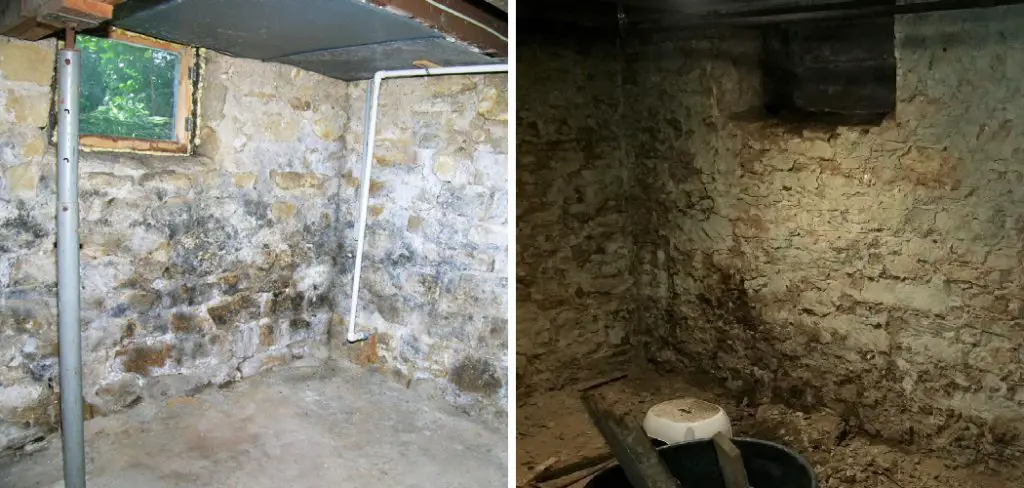
Many homeowners who own limestone properties find themselves in the same situation with failing walls and decayed foundations. But don’t panic – there are solutions to help fix your home’s foundation and keep it stable for years to come. Today we’ll be talking about how to repair and maintain your limestone basement walls so that you can avoid costly fixes down the line.
Keep reading to learn tips on preventing water damage, proper caulking techniques, sealing vulnerable areas, and more!
Why is It Important to Fix Limestone Basement Walls?
1 . To Prevent Water Damage
Limestone basement walls are a common part of many homes, especially those built in areas with high water tables. Unfortunately, the porous nature of limestone makes it especially vulnerable to water damage. If you don’t fix any cracks or other problems quickly, they can eventually lead to serious structural issues and even mold growth. By taking steps now to fix your limestone basement walls, you can protect your home from further damage.
2 . To Improve the Overall Look and Feel of Your Home
Limestone is a beautiful material that can add an elegant touch to any space. Unfortunately, over time, limestone basement walls can start to look worn and dingy due to age and exposure to moisture. By taking steps to repair and maintain your limestone basement walls, you can help them look as good as new.
3 . To Create a Safer Environment for You and Your Family
In addition to the aesthetic advantages of fixing limestone basement walls, it’s also important to do so for safety reasons. Cracks and other damage in the walls can create instability that can lead to falls and other accidents. By taking steps now to repair any issues, you can create a safer living environment for your family.
4 . To Reduce Energy Costs
Finally, it’s important to note that fixing limestone basement walls can help you save energy and money in the long run. By repairing any damage, you can reduce the amount of air that escapes through the walls, which helps to keep your home more energy-efficient. This means lower utility bills and greater savings for you!
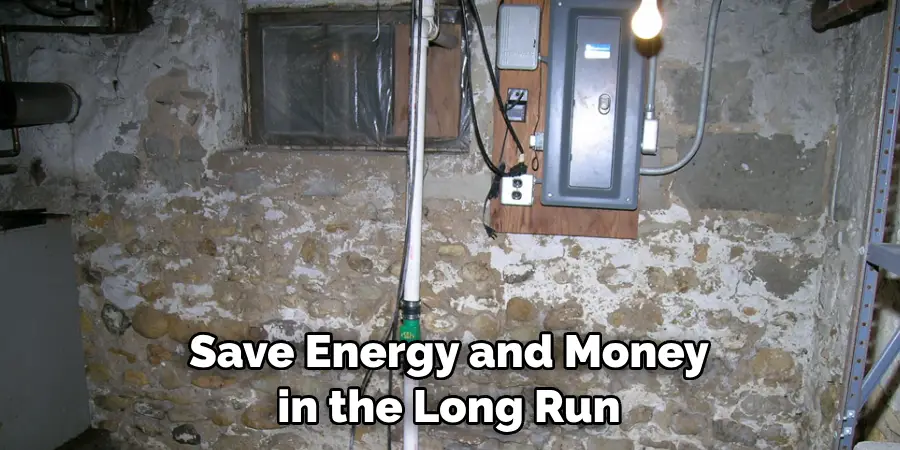
By taking the time to fix your limestone basement walls, you can enjoy all these advantages and more. With a little effort and some preventive maintenance, you can protect your home from further damage and keep it looking great for years to come.
How to Fix Limestone Basement Walls in 6 Easy Steps
Step 1: Gather All The Tools
The very first step is to gather all the tools you will need to fix your limestone basement walls. This includes a hammer, chisel, drill, trowel, epoxy patching compound, and a few other items. Make sure you have everything before starting the project.
Step 2: Inspect the Walls Thoroughly
Now that you’ve gathered your supplies, the next step is to inspect all of your limestone basement walls. Look for any cracks, chips, or other signs of damage and make a note of them.
Step 3: Remove Any Loose Pieces
Once you’ve located any areas that need repair, you should remove any loose pieces with a hammer or chisel. This will help to ensure that your repairs will hold up in the long run.
Step 4: Fill in Cracks With Epoxy Patching Compound
Now it’s time to fill in any cracks with an epoxy patching compound. Make sure you apply the compound evenly and allow it to dry completely before moving on to the next step. Also you have to make sure that the patching compound has the same color as your limestone basement walls so they can blend in nicely.
Step 5: Drill Into The Wall
For any large cracks or holes, you may have to use a drill to create a space for the patching compound to fill. Be sure to wear safety goggles and other protective gear when using power tools.
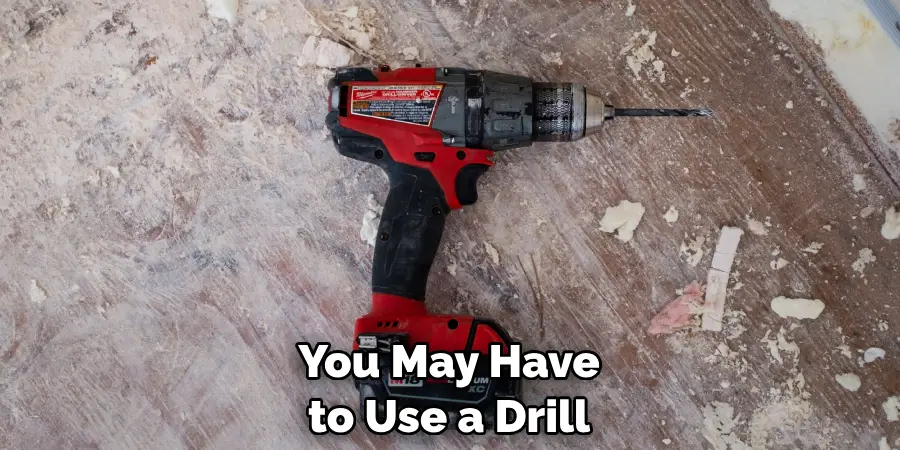
Step 6: Apply a Layer of Paint
Finally, apply a fresh coat of paint to the walls. This will help ensure that your repairs blend in with the surrounding limestone and make it look like new again.
These six steps should help you repair any damage to your limestone basement walls quickly and easily. Remember, regular maintenance is important to keep your limestone walls looking great for years to come.
How to Protect Your Limestone Basement Walls
Now that you know how to fix the damage, it’s important to also learn how to protect your limestone basement walls from further damage. Here are a few tips on how you can do this:
1 . Monitor Moisture Levels
The first step is to monitor the moisture levels in your basement. If you have high humidity levels, it’s important to reduce them as quickly as possible. Invest in a dehumidifier and check the relative humidity regularly.
2 . Use Sealants or Paint to Waterproof Your Walls
If you want extra protection from water damage, you can use sealants or waterproof paint on your limestone basement walls. This will help to keep out moisture and reduce the risk of further damage in the future.
3 . Seal Any Cracks or Holes
Finally, make sure to repair any cracks or holes in your walls as soon as possible. A good patching compound should do the trick, but be sure to follow the manufacturer’s instructions for best results.
By following these simple tips, you can keep your limestone basement walls looking great and free from damage for years to come!
Frequently Asked Questions
What Precautions Should I Take Before Repairing Limestone Basement Walls?
Before repairing limestone basement walls, it is essential to ensure that all safety precautions are taken. It is important to wear protective clothing and glasses while working with limestone since the dust can irritate the eyes and lungs. Also, be sure to use a dust mask to avoid breathing in any airborne particles. Additionally, if you plan on using a power tool to complete the repair, make sure it is in good working condition and unplug it when not in use.

How Do I Repair Cracks in Limestone Basement Walls?
There are several methods for repairing cracks in limestone basement walls. One of the most common ways is to fill them with concrete patch. This can be done by mixing the concrete patch with water to form a paste, and then applying it to the crack using a putty knife. Once applied, it should be allowed to dry overnight before smoothing out the patched area with sandpaper.
How Do I Repair Spalling Limestone Basement Walls?
Spalling limestone basement walls can be repaired in much the same way as cracks. First, clean any dust and debris from the wall with a damp rag. Then, fill in any spalled areas with a concrete patch and let it dry overnight before sanding to create a smooth surface.
Can I Paint Limestone Basement Walls?
Yes, you can paint limestone basement walls. However, extra preparation is required before doing so. First, any cracks or spalling areas must be filled and sanded as mentioned above. Then, the limestone should be coated with a primer specifically designed for masonry surfaces to ensure proper paint adhesion. Once this has been done, you can then proceed to painting the wall using an appropriately-formulated paint for masonry surfaces.
What Should I Do if My Limestone Basement Wall Is Experiencing Seepage?
If your limestone basement wall is experiencing seepage, it is important to identify the source of the problem and address it as soon as possible. Common causes of seepage in limestone walls include cracks, poor waterproofing, or a faulty drainage system. Once the cause has been identified, it can be addressed by sealing the cracks, applying a waterproof coating or overhauling the drainage system. Doing so should help prevent future seepage problems.
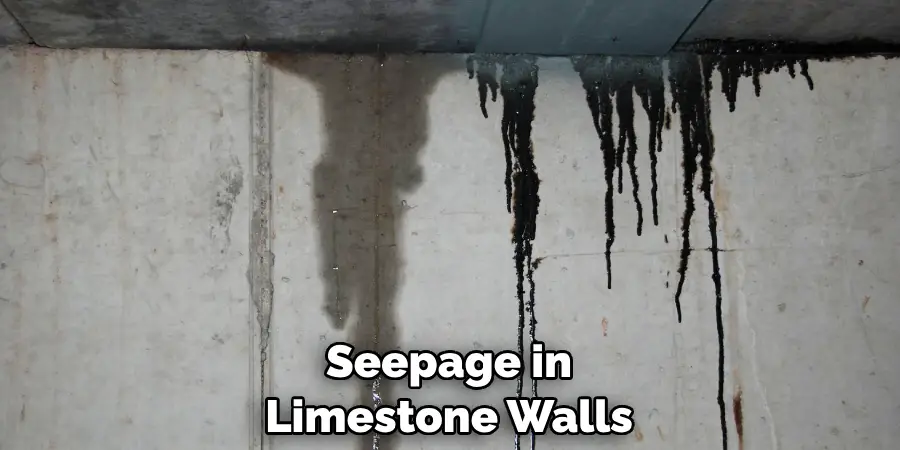
Conclusion
To conclude, when dealing with limestone walls in the basement, it’s important to take proactive steps to minimize water and moisture damage. Fixing them, unfortunately, can be a complicated process involving several steps of repairs, but it is necessary to ensure structural integrity. Additionally, hiring a professional is often the best way to determine the underlying causes of deterioration and make sure all repairs are done properly.
With continual maintenance and attention to signs of decay, you can enjoy your limestone basement walls for many years to come. Remember that prevention really is key: keeping up on any maintenance needed will save you time, money and energy further down the line when fixing foundation problems. Plus, if you follow these simple steps on how to fix limestone basement walls it can help maintain long-term quality and value of your home.

